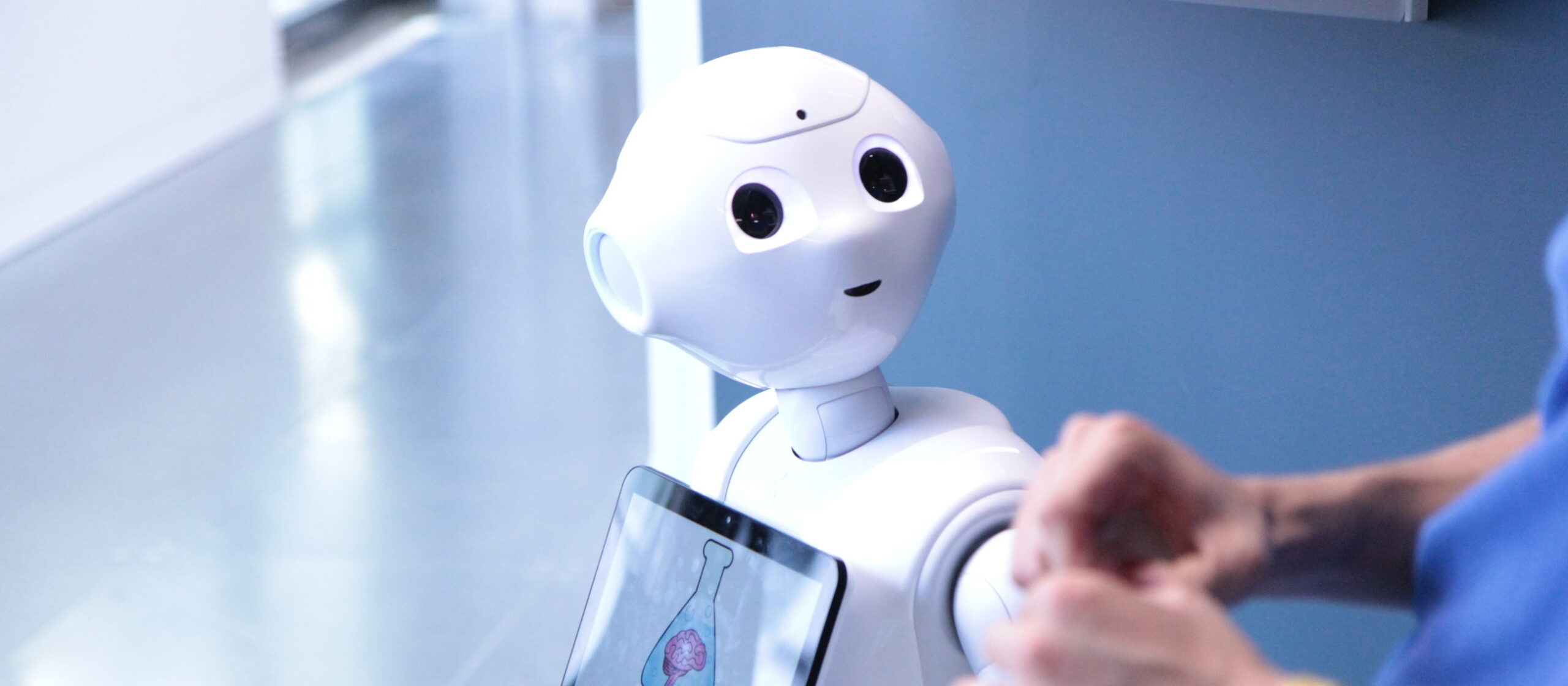I often get asked why we took on a robot receptionist. Doesn’t that scare our human employees? Am I trying to induce the robocalypse?
The main thing to remember about increased automation is that it’s synonymous with increased productivity. In other words, business growth. Which leads to more employment, by the way. This has been true for Brainlabs, and it has been true for countless other companies before us.
Time and time again, history has shown us that job growth as a result from technological advancements far exceeds the effects of displacement.
McKinsey estimate that automation alone could raise productivity growth on a global basis by up to 1.4 percent annually. AI might contribute up to $15.7 trillion to the global economy in 2030. And there’s so much potential: no less than half the current activities carried out by workers in Europe could be automated.
Don’t rest on your laurels
Unfortunately, we have all been too slow at adapting, and none more so than Europe, which has only captured 12% of its potential from digital technologies. This may be in part due to low levels of investment; compared to North America’s $15-23 billion and Asia’s $8-12 billion, Europe only saw $3-4 billion in external investments in 2016. The majority of external funding goes to AI research hubs and firms, and most of these happen to be in the US and China.
According to a 2018 report by the European Commission, the current level of investment is insufficient to allow for a broad adoption of AI by European businesses. As a consequence, they predict that “well established European enterprises and even whole business models could become obsolete”.
How to get started today
According to research by McKinsey, having a proactive strategy and adopting AI early will help businesses gain higher profit margins than their competitors. This gap is only going to increase over the next few years.
In a nutshell, AI means such a strong competitive advantage, that failure to adapt and adopt on time will lead to immense losses for businesses.
So, where do you begin?
Adaptability is key to grow any business, whatever the industry. Digital marketing is a great example, which is driven by tech and prone to disruption. It’s going through exponential growth, and everyone can learn something from that. Especially business leaders that want to survive the fourth industrial revolution.
Having the competitive edge means automating as much as possible to leave more time to develop skills that can’t be automated: from marketing strategy and client relationships to competitor analysis and understanding consumer behaviour trends.
Businesses need to adapt fast… and adopt FAST
Enter FAST-thinking. The framework that powers the Brainlabs machine.
Formalise
Formalising a process means converting it from something you do to something you use, making you express the method needed to move from point A to point B. It’s about proactivity in preparing processes that can be re-applied in future scenarios, anticipating problems to keep performance up.
Every Brainlabber is trained to design and build processes to ensure maximum scalability of the business. We step back and think: “How can I help someone prevent or deal with similar circumstances more effectively?” and “Will this process work when we are three times our current size?”
Automate
This one hardly needs any explaining. Automating is about heightening efficiently on an individual and company-wide level. Spending less time on easy, repetitive tasks means you can spend more energy on more interesting things.
At Brainlabs, it’s simply culturally ingrained. Our mantra is: “if you have to repeat something 3 times, automate it”. In the interest in saving everyone’s time, we’ve built a tech stack designed to save employee time to focus on value-add tasks. It reduces manual tasks by 37% and saves 14 hours per week for strategy and analysis.
Share
Sharing (across teams, departments and companies) is caring. When a single process becomes scalable, that’s when real value, at scale, comes into play. Rather than let others waste time with the same issues, or have to teach and re-teach the same thing, sharing allows others to build on what has been done by making all processes fully transparent and user-friendly.
We’ve democratised software innovation, so that not only the senior team has an influence over how the business operates. Of the thousands of tech innovations that we’ve engineered to improve our client services, only a minority have come from senior leadership.
Test
Sometimes, things change, and a process can become outdated. Testing is about challenging all of the above and continuously re-thinking, updating, re-writing. Processes are voted on to measure how much on an impact they have, so that their creators can keep improving them. With regular re-evaluation, we can make sure that our processes are always at optimum efficiency.
Start small, and think fast
FAST isn’t just about small improvements. Whether you’re automating a routine email or hiring a robot, the mindset you need is exactly the same. You need to constantly assess everything to see where you’re missing the potential for automation and efficiency, and then be ready to redesign your systems from top to bottom. If your company culture lives and breathes automation, you’ll learn how to apply human intelligence to automation and develop the skills that will be valuable in the long run.
Companies don’t last as long as they used to, and the survival rate has been steadily decreasing. Almost 50% of UK startups fail to live more than five years. Embracing adaptability and automation is a must for every single individual and business.



